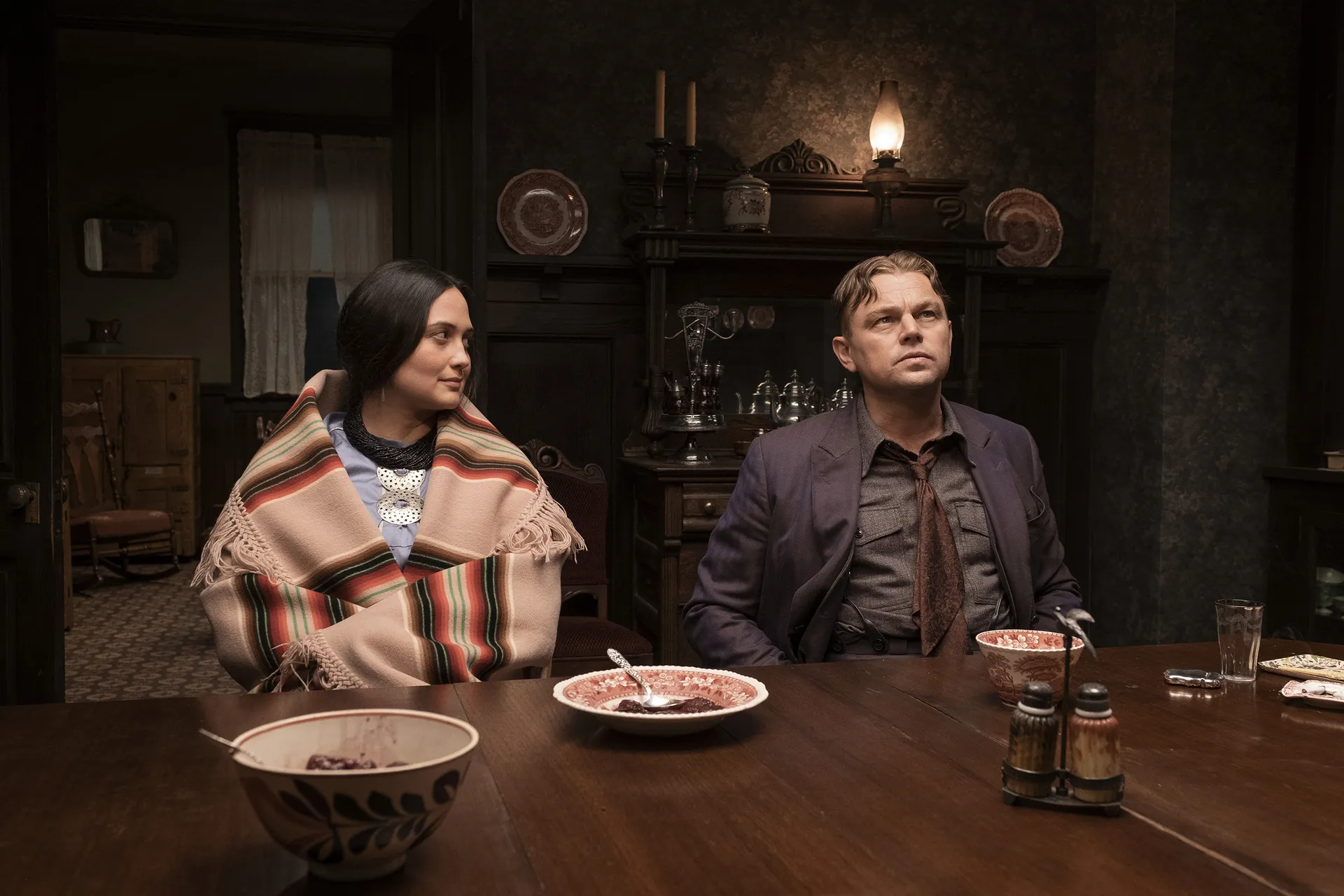Review: Killers of the Flower Moon

Words by Alice Patterson / Edited by Mia Stapleton
Alice Patterson reviews Scorsese’s newest production. With a star studded cast, and an important sight into history, was Killers of the Flower Moon enough?
Oklahoma, 1923. 3 am. Mollie Burkhart was awoken in her home when her windows were blown in from a blast nearby. Rita, Mollie’s sister, and her husband, Bill, were killed when their house exploded in a deafening eruption. This was not the first murder- nor would it be the last- of the Osage Native Americans. This is the story told in Scorsese’s latest contribution, Killers of the Flower Moon. The film details the vile plot of William Hale and Ernest Burkhart, along with many other white men, to murder Osage Native Americans and retain their fortunes – gained from the oil found on the Osage Indian Reservation in the late 19th century.
The movie is based on a 2017 novel of the same title by American journalist David Grann, but takes on a new perspective. The novel follows Tom White, an FBI agent, who in 1925 was assigned the case and investigated the deaths of over sixty wealthy Osage people. However, Killers of the Flower Moon tells the story through the lens of Ernest Burkhart, a white man, and his marriage to Mollie Kyle, an Osage woman. Under his uncle, insurance titan (and fraudster) William Hale’s influence, Ernest and William plot to murder several Osage people – beginning with Mollie’s sisters – in hopes of obtaining their wealth.
Leonardo Dicaprio, taking on the role of Ernest Burkhart, melts effortlessly into the character. The combination of his incredibly off-putting prosthetic teeth and relentless Texan accent make for one of his most striking performances – there is a real depth to Ernest’s moral disregard. He plays a classic Scorsese antihero with a pathetic vulnerability that brings the historical figure to life. Robert De Niro, playing his uncle William Hale, is also at the top of his game here. His depiction of the manipulative Hale is severe, cunning, and will make your hairs stand on end. Last, but certainly not least, is Lily Gladstone. A newcomer for those who did not catch her in HBO’s Room 104 or FX’s Reservation Dogs, she is gut-wrenchingly brilliant in taking on Mollie Burkhart’s character. The choice to centre Mollie and Ernest’s union brings us to the heart of the story, but I cannot help but see it as an opportunity squandered by Scorsese. For a film that attempts to shed light on both a historical event and a group of people oppressed for over a century by Western culture, it still felt at times like the Leo and Robert show. Mollie is either ill or grieving for most of the 206-minute runtime, and while her portrayal of a woman grief-stricken and paralysed by tragedy is gut-wrenchingly brilliant, I get a sense there was more Mollie in Lily Gladstone that she did not get to express.
Regardless of any missed opportunities, the film manages to maintain a sense of urgency amongst both moments of chaos, and stills of the quiet, seemingly serene Oklahoma backdrop. Immersive, harrowing, and powerful, Killers of the Flower Moon serves to remind Americans that their nation came at the expense of tragedy.
Image Credits: AppleTV+
